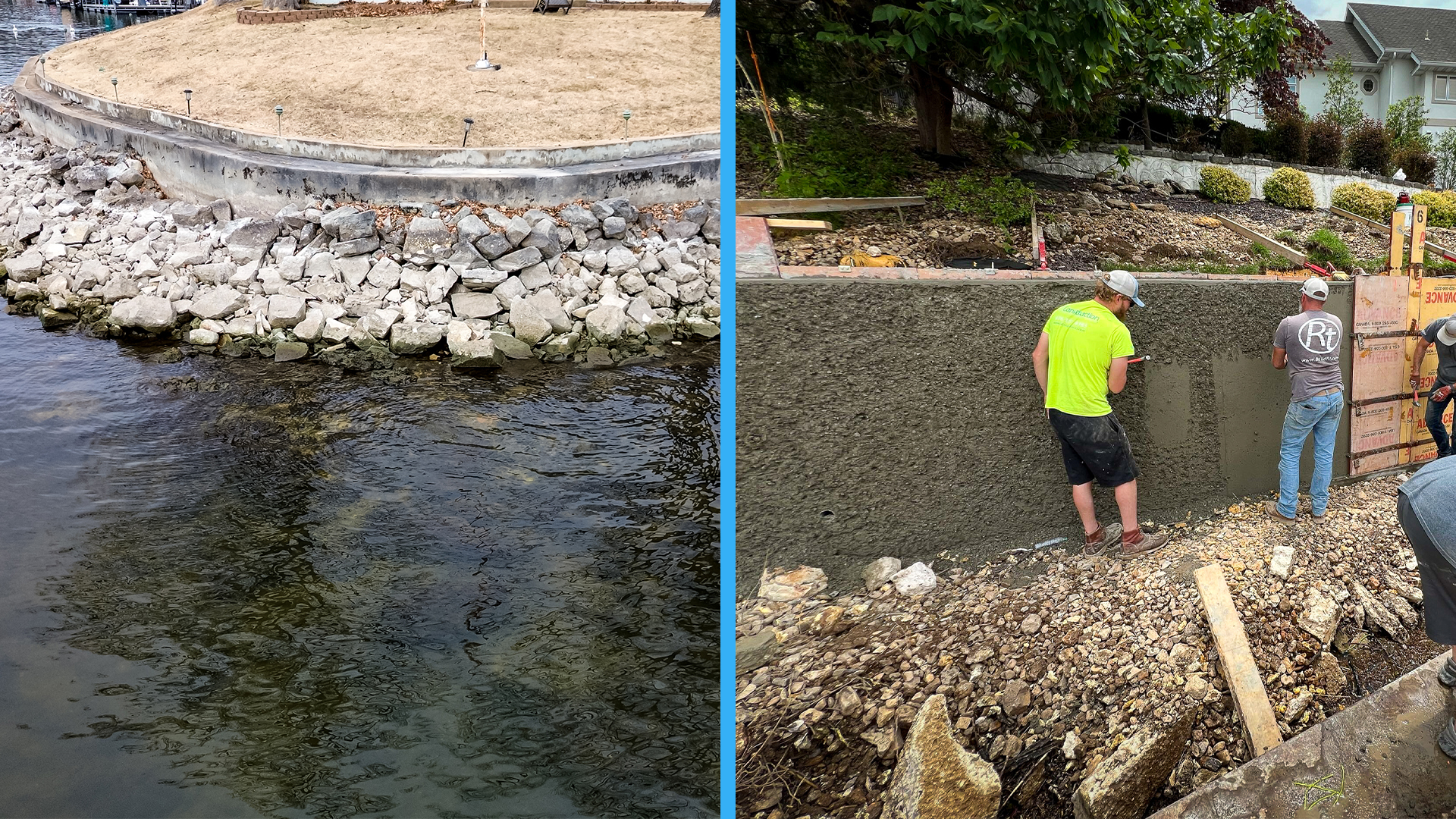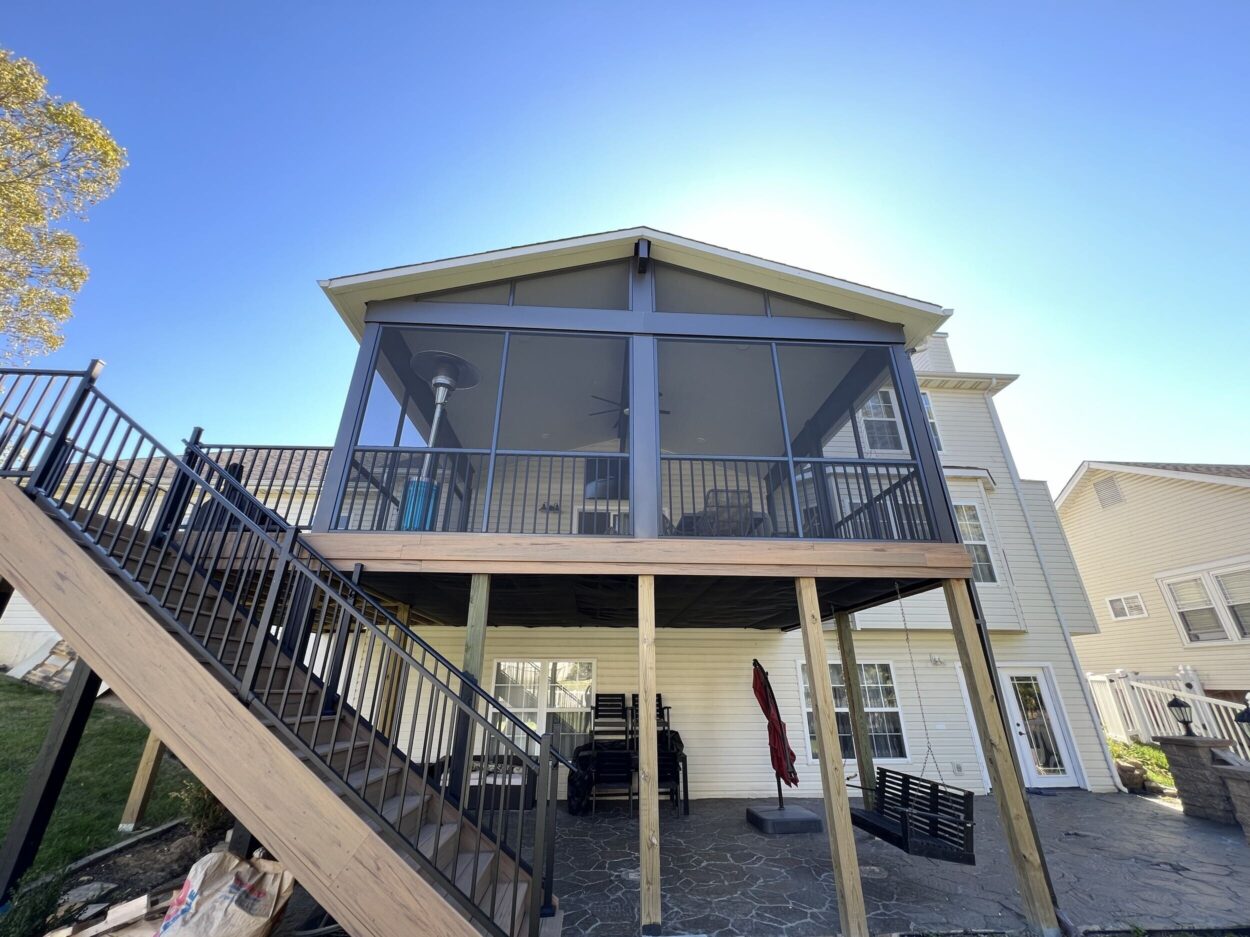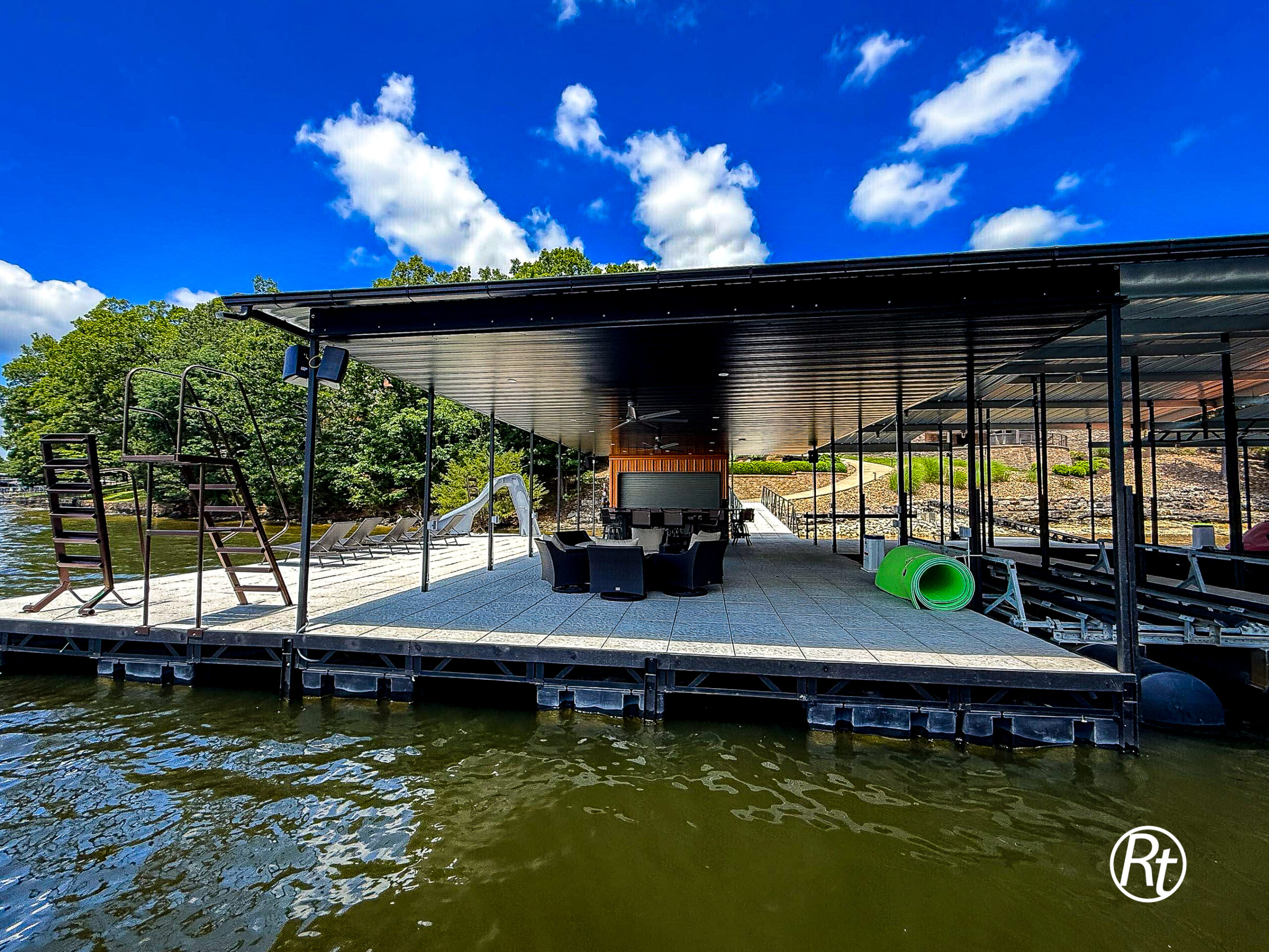Owning a waterfront property—especially on the beautiful shores of Lake of the Ozarks is a dream for many homeowners. But with that dream comes the responsibility of protecting your shoreline from erosion, wave impact, and rising water levels. Two of the most effective methods for shoreline stabilization are riprap installation and seawall construction. So, which one is right for your property?
At RT Construction, we specialize in both solutions, and we’re here to break down the pros, cons, and best-use cases for each.
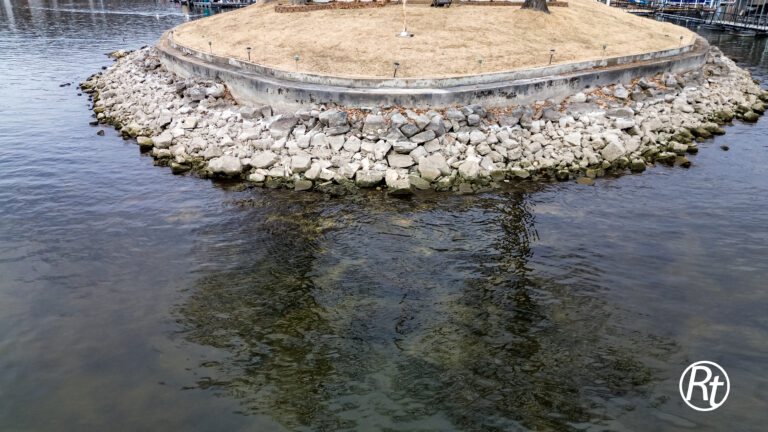
What is Riprap?
Riprap is a natural erosion control method using large, loose stones (often granite or limestone) strategically placed along the shoreline. These rocks absorb and deflect the energy of incoming water, preventing erosion and soil displacement.
Pros of Riprap:
- Natural Aesthetic: Blends well with the lakefront environment and landscaping.
- Cost-Effective: Typically more affordable than seawalls, especially for larger shorelines.
- Flexible & Durable: Performs well in areas with fluctuating water levels.
- Environmentally Friendly: Promotes aquatic habitats and reduces runoff velocity.
Best For:
- Gently sloping shorelines
- Areas with mild to moderate wave action
- Properties prioritizing a natural appearance
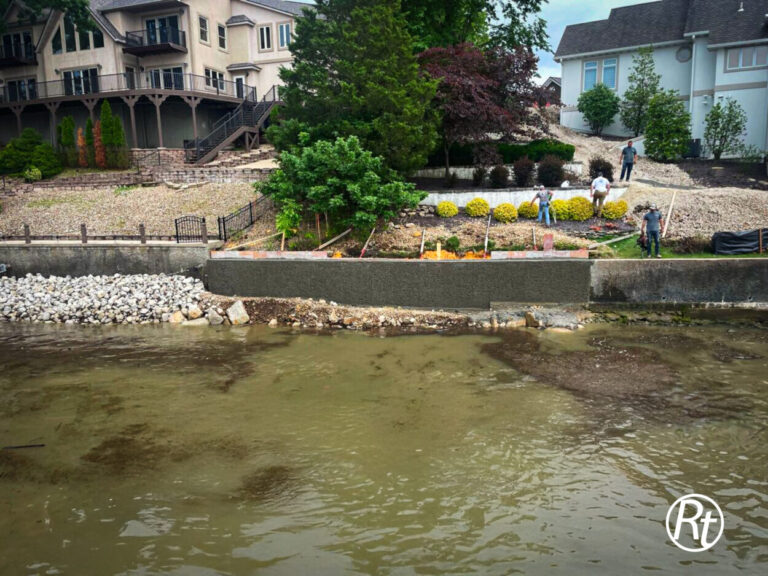
What is a Seawall?
A seawall is a vertical or near-vertical structure, usually made from concrete, vinyl, or treated wood, that acts as a barrier between your property and the water. It holds back soil and protects against erosion and flooding.
Pros of Seawalls:
- Strong Protection: Excellent for properties exposed to heavy wave action or steep banks.
- Space-Saving: Requires less horizontal space than riprap, ideal for smaller or more developed lots.
- Defined Edge: Creates a clean, sharp property boundary and allows for easy boat dock access.
Best For:
- Steep or heavily eroding shorelines
- High-traffic water areas with boat wake
- Homeowners wanting a sleek, engineered look
Which is Right for You?
Choosing between riprap and a seawall depends on several factors:
|
Factor |
Riprap |
Seawall |
|
Cost |
Lower initial cost |
Higher due to materials and engineering |
|
Aesthetics |
Natural and rustic |
Modern and structured |
|
Wave Protection |
Good for moderate wave action |
Best for high wave and wake areas |
|
Maintenance |
Minimal |
Periodic inspection & repairs |
|
Environmental Impact |
Supports habitats |
May disrupt natural shoreline dynamics |
RT Construction’s Take
We’ve worked with dozens of homeowners across the Lake of the Ozarks and St. Louis area, helping them protect their investment and preserve the beauty of their waterfront. Our recommendation?
- Go with riprap if you prefer a natural look and your shoreline is gently sloped or exposed to mild wave activity.
- Opt for a seawall if you’re dealing with steep banks, significant erosion, or frequent boat traffic that batters your shoreline.
In some cases, a hybrid solution—where riprap is placed in front of a seawall—provides maximum protection and visual appeal..
Ready to Protect Your Shoreline?
Whether you’re leaning toward riprap, seawall installation, or need expert guidance, RT Construction is here to help. With years of experience, local knowledge, and a commitment to quality, we’ll ensure your shoreline stays secure for years to come.
📞 Contact us today for a free consultation and site evaluation.

